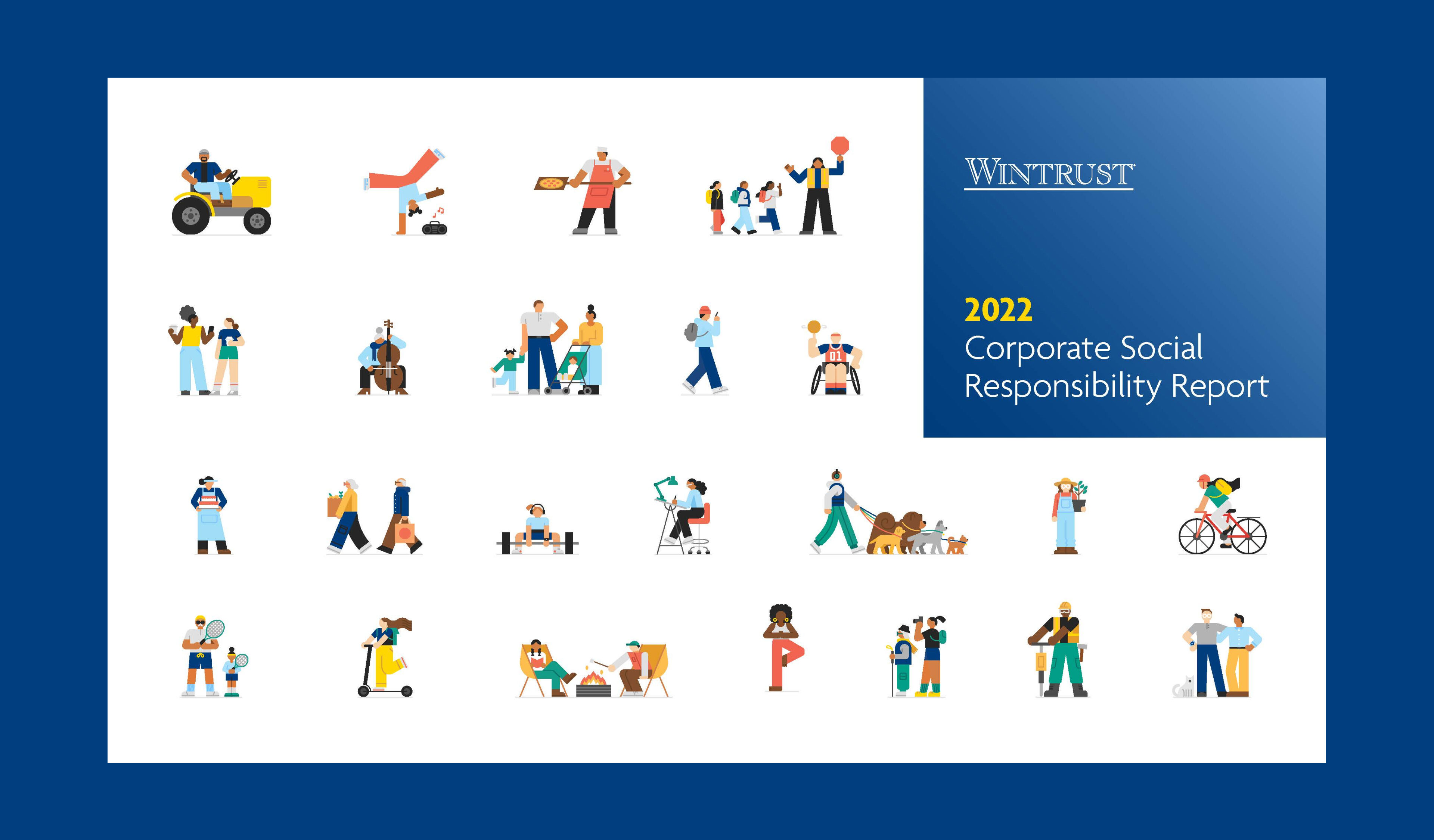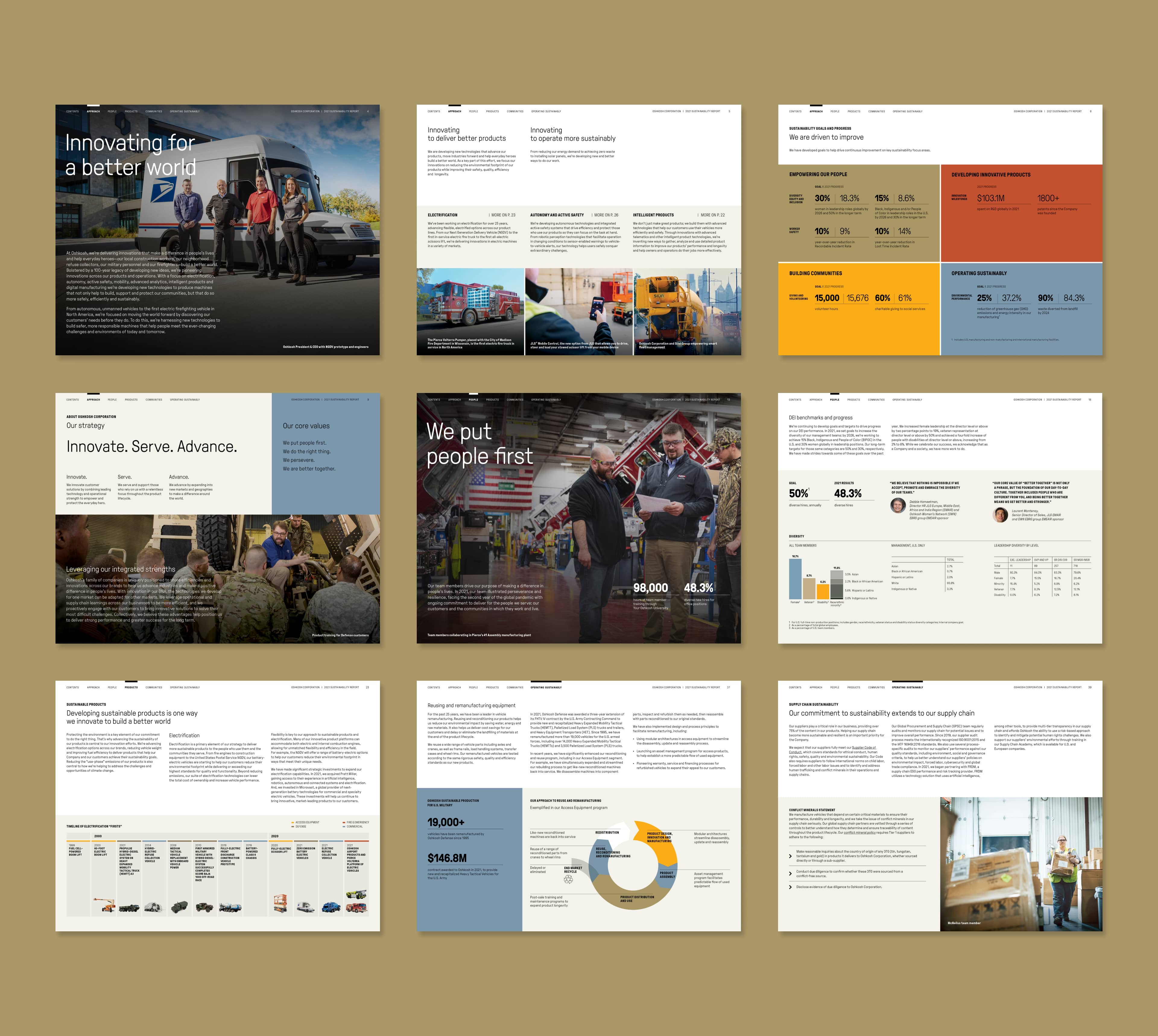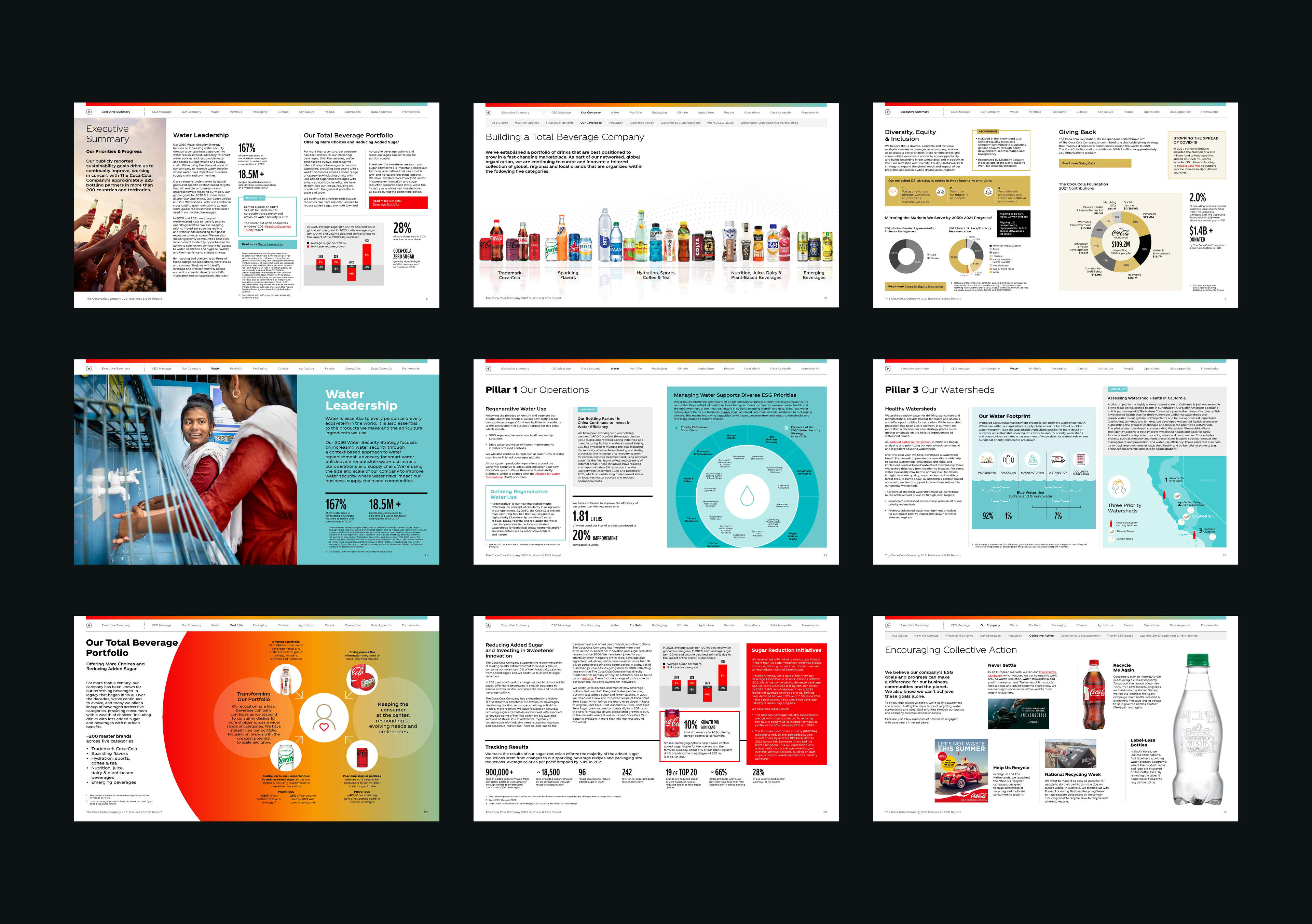7 Strategies for Effective Sustainability Communications
As experts on ESG and Sustainability communications, we’ve done a lot of thinking and writing on best practices. Whether you’re looking to launch an employee campaign, create your first sustainability report or level up ESG communication — these strategies will help you avoid the most common pitfalls.
1. Be true to your brand: Social impact & Sustainability isn’t separate from your brand
How your sustainability and ESG efforts align with your values, brand attributes, and business strategies informs how you tell your sustainability story, from narrative to design. That said, don’t be afraid to stretch your visual brand language. You may need to expand your toolkit with additional images, icons or graphics. As always, your communication needs to be on-brand.


2. Keep it simple: Get clear on the communication scope and depth
Saying too much about your ESG goals can leave you accused of greenwashing or “woke leadership,” while greenhushing—or not saying anything at all about your efforts—may be a bigger problem when it comes to effective long-term sustainability communications. Sustainability has become complex and abstract, and even risky. Companies sometimes lean into the “kitchen sink” method, attempting to include global carbon emissions reduction and office recycling — with employee efforts sprinkled in between. Resist the temptation to include every piece of information. While all your efforts may be worthy, taking a no-filter approach rarely leads to effective storytelling, and can seem like a distraction. Plus, stakeholders are rarely satisfied — you can never disclose enough!
Consider what metrics are most important to your company and your company’s audience. What messages do you most want to communicate? Your clear priorities and business strategy should inform the hierarchy and segmentation of information and focus the stories you include. More is not always more.
3. Keep it personal: Make stories succinct and relatable
While the intent the concept to “end climate change” is noble, many feel we’ve surpassed the ability to do so, and even if we haven’t, the goal is so big it is difficult to grasp. Reduce your scale and narrow your aperture by elevating stories that involve people bringing your efforts to life on a relatable scale. It helps give readers an “on-ramp” to your more complex issues and statistics, you can still tell a story with your data. Simply, humans relate to stories about humans when individual efforts have a positive and measurable impact on people and communities. Especially when they can see and hear from those whose lives were affected.
Avoid jargon, write in a clear, appealing and conversational tone, and avoid information overload by sharing complex topics and data by way of visualizations and callouts.

4. Visualize information: Make complex sustainability ideas more understandable
Infographics, charts, callouts and key stats can make complex ideas more digestible. And, that layer of visual information, in addition to the details where necessary, keeps information scannable for all readers, quickly communicating the salient points.
On the web, video and animations can enrich storytelling and engage visitors who may not read everything. All these items can draw readers in and encourage them to dig deeper, but don’t go overboard! White space and uncrowded layouts mean optimum readability.

5. Avoid visual cliches: Sustainability isn’t always “green“
Sustainability/ESG covers many broad and deep topics, and using imagery that is applicable to your organization, relevant to your business and aligned to your visual brand signals that you take these topics seriously. It’s okay to use green as a signifier—hopefully a shared green from your brand palette—but no need to use all green. Overdone, it can seem trite and will blend into the noise of many other sustainability communications.
To help your brand flourish, create original photos that relate specifically to the stories you are telling; design icons, infographics and illustrations to elevate your storytelling; and include your people in your assets to humanize your company.
Remember: no seedlings, no Earth from space, no gratuitous close-up shots of the recycling logo. Sustainability/ESG is a business priority, treat it that way.
6. Tell the truth: Greenwashing and regulations are on the rise
With the world in flux, to say the least, and the growing pressure to be sustainable measured against evolving standards, frameworks and regulations, it can be tempting for an organization to want to “pad” their efforts. But it takes years to build investor, employee and public trust — and just one misstep to blow it. Be authentic, communicate your good faith efforts, the progress you’ve made towards your goals — and the obstacles you’ve encountered along the way.
7. Meet your audiences where they are: There’s not a one-size fits all approach
Connecting with your stakeholders in a way that feels authentic and meets them where they can be challenging in today’s landscape. Explore various channels that work for your different audiences to reach them effectively — whether that’s email, the intranet, on social media or by way of your investor relations team. Putting your company’s messages out is only valuable if those communications reach stakeholders. And be sure your communications offer a two-way street.
Get guidance: Consider expert help
Of course, to get your messages out most effectively, you may need the help of strategy, storytelling, design, development and production pros. If you find yourself are struggling to see the forest for the trees inside your own company, consider engaging an expert. Check out some of the stakeholder-pleasing sustainability/ESG reports and impact communications IOP has created — and email us to get in touch if you need help with yours.
Updated July 2023
Photo by Allec Gomes on Unsplash